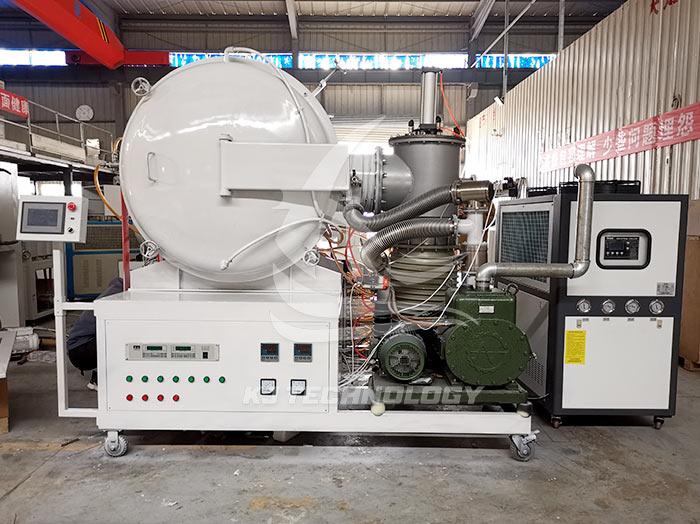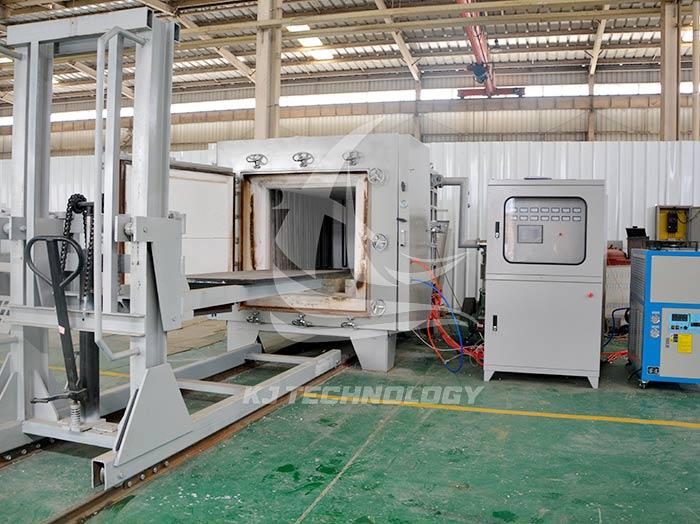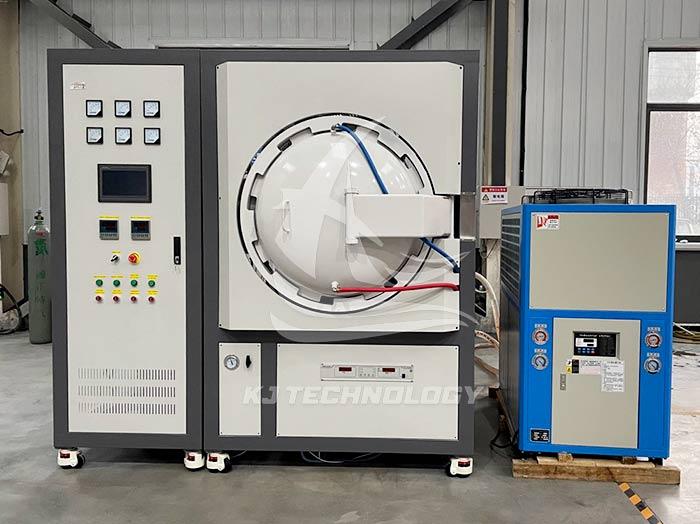Daily maintenance of vacuum hot press furnace
 07-07-2025 Author: KJ technology
07-07-2025 Author: KJ technology
As a high-precision and high-value heat treatment equipment, the daily maintenance of the vacuum hot press furnace directly affects the stability of equipment performance, service life, and product qualification rate. From six aspects of cleaning and maintenance, lubrication and maintenance, vacuum system maintenance, electrical system inspection, safety protection, and record management, the daily maintenance points of the vacuum hot press furnace are systematically summarized as follows:
1. Cleaning and maintenance: keep the equipment clean inside and outside
Internal cleaning of furnace body
Furnace cleaning: After each use, use a soft bristled brush or vacuum cleaner to remove residual powder, oxides, and impurities in the furnace, to avoid reacting with the furnace lining at high temperatures to produce slag and corrode the furnace body.
Heating element protection: Regularly check whether the surface of the heating tube (such as silicon carbon rod, silicon molybdenum rod) is attached with dirt, wipe it with alcohol swab to prevent local overheating and breakage.
Insulation layer inspection: Observe whether the insulation screen (such as molybdenum sheet, graphite felt) is damaged or detached, and replace it in a timely manner to maintain insulation performance.
External cleaning of furnace body
Wipe the surface of the furnace with a dry cloth to remove oil stains and dust, and avoid using corrosive cleaning agents.
Check whether the cooling water pipeline leaks, repair and clean the scale in a timely manner to prevent a decrease in cooling efficiency.
Mold and tooling cleaning
After each use, use a wire brush or ultrasonic cleaning machine to remove any residue on the surface of the mold, apply anti rust oil for storage, and prevent rust from affecting accuracy.
2. Lubrication and maintenance: ensure smooth operation of mechanical components
Lubrication of transmission mechanism
Screw and guide rail: Wipe the surface of the guide rail with a dust-free cloth every week and apply special lubricating grease (such as Morse oil) to reduce wear and tear; Check the clearance between the screw nut every quarter and adjust it to the specified value.
Chain and gear: Check the tension of the chain every month, apply high-temperature lubricating grease (such as molybdenum disulfide) to prevent jamming.
Pneumatic system maintenance
Air source processing unit: Drain and check the oil level of the oil mist device every week, replenish specialized pneumatic oil (such as ISO VG32), and ensure smooth cylinder operation.
Electromagnetic valve and cylinder: Clean the surface oil stains of the valve body with alcohol every month, and check whether the piston sealing ring is aging and leaking.
3. Vacuum system maintenance: ensuring stable vacuum degree
Vacuum pump maintenance
Oil level check: Check the oil level of the diffusion pump or mechanical pump before starting up daily. If it is lower than the scale line, add special vacuum pump oil (such as silicone oil or mineral oil).
Oil quality monitoring: Take samples every quarter to observe the oil color. If it turns black or contains impurities, replace it with new oil and clean the oil tank.
Cooling water flow rate: Ensure that the cooling water flow rate of the vacuum pump is ≥ 5 L/min and the water temperature is ≤ 35 ℃ to prevent overheating of the pump body.
Vacuum gauge calibration
Compare and calibrate the ionization gauge or Pirani gauge with a standard vacuum gauge every month, and recalibrate when the error exceeds ± 10%.
Seal inspection
Check the O-ring or fluororubber ring at the furnace door, observation window, and flange connection every week, clean it with anhydrous ethanol and apply vacuum grease. Replace it immediately if it ages or is damaged.
4. Electrical System Inspection: Preventing Circuit Malfunctions
Temperature control system calibration
Every quarter, use a standard thermometer (such as a platinum rhodium thermocouple) to compare the actual temperature inside the furnace with the instrument display value. If the error exceeds ± 5 ℃, adjust the temperature controller parameters or replace the thermocouple.
Power and Circuit Inspection
Check the power cord and heating element wiring terminals for looseness or oxidation every month, polish the contact surface with sandpaper, and tighten the screws.
Measure the insulation resistance of the heater with a megohmmeter. If it is lower than 0.5 M Ω, it needs to be dried or replaced.
Grounding protection test
Check the grounding resistance of the equipment every six months to ensure it is ≤ 4 Ω and prevent the risk of leakage.
5. Security protection: eliminate hidden dangers
Overtemperature protection test
Simulate over temperature conditions (such as short circuiting thermocouples) every month to verify whether the over temperature alarm can trigger and cut off power within the set temperature (such as ± 10 ℃).
Emergency stop function verification
Press the emergency stop button every week to check if all moving parts (such as heating, pressurization, vacuum pump) immediately stop.
Inspection of protective devices
Ensure that the observation window, protective fence, and safety interlock device are in good condition, and prohibit unauthorized removal or shielding.
6. Record management: Tracing equipment status
Maintenance log
Record daily equipment operating parameters (such as temperature, vacuum degree, pressure curve), abnormal phenomena and handling measures, and form a traceable maintenance file.
Spare parts list
Establish a inventory list of vulnerable parts (such as thermocouples, sealing rings, vacuum pump oil), purchase spare parts in advance, and avoid downtime and waiting for materials.
7. Seasonal maintenance focus
Summer: Strengthen the maintenance of the cooling system to prevent equipment overheating caused by high water temperature.
Winter: Preheat the vacuum pump oil to room temperature before starting to avoid damaging the pump body due to high oil viscosity.
During the rainy season, increase the frequency of equipment dehumidification to prevent electrical components from being affected by moisture and short circuiting.








